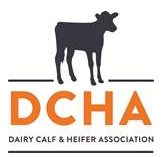
DCHA: Nesting is not just for the birds
 The thermoneutral zone of a newborn dairy calf is 50 to 78°F. Therefore, it is critical that calves be given sufficient bedding so they can keep warm as the temperature drops.
The thermoneutral zone of a newborn dairy calf is 50 to 78°F. Therefore, it is critical that calves be given sufficient bedding so they can keep warm as the temperature drops.Experts with the Dairyland Initiative at the University of Wisconsin-Madison School of Veterinary Medicine say a deeply bedded resting surface that allows calves to "nest" is ideal. Nesting allows the calf to preserve body heat for growth, as well as support the immune system.
So how can you tell if bedding levels are sufficient for nesting? Visually evaluate bedding conditions and assign a Nesting Score of 1, 2 or 3 based upon the visibility of the calf's rear legs when she is lying down.
If the calf's legs are entirely visible when it is lying down, that is a Nesting Score of 1. If her legs are partially visible when she is lying down, that is a Nesting Score of 2. If the calf's legs are not visible when she is lying down you've achieved a Nesting Score of 3. Another way to get a Nesting Score of 3 is to provide a moderate amount of bedding plus a calf jacket, say researchers with the Dairyland Initiative.
Nesting is very important to calf respiratory health, according to projections from the Dairyland Initiative which suggest approximately a 28 percentage point improvement in respiratory disease in calf barns with a Nesting Score of 3 vs. barns with a Nesting Score of 1.
Learn more in the Dairyland Initiative Newsletter.
12.4.2013